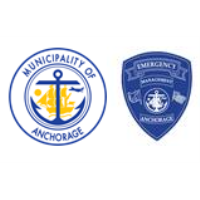Member News
Does your business have exciting news it wants to share with the rest of the Anchorage Chamber membership? To submit an announcement, log in to your Anchorage Chamber profile and complete a News Release. For assistance accessing your account, call (907) 272-2401.
Anchorage Chamber staff will review and approve all submissions.
Municipality levels up preparations for Mount Spurr
Today, the Municipality’s Office of Emergency Management is stepping up to a Level Two activation status (of five possible levels) as they continue to monitor, coordinate, and share information about the potential of a Mount Spurr eruption.
Mount Spurr’s official alert level has not changed since October 16, 2024 when the Alaska Volcano Observatory (AVO) elevated it to Yellow/Advisory status due to increased activity. However, on March 12, the AVO released a statement that rising gas emissions mean they consider an eruption similar to those in 1992 and 1953 to be “the most likely outcome” of the current unrest. This has increased communication and press coverage, generating the need for more capacity to coordinate, prepare, and respond to community questions.
“We’ve seen our communication and education efforts having the desired effect — awareness is rising,” said Mayor LaFrance. “Stepping up our emergency operations one level is the appropriate move to help manage preparation and reduce community concern. I encourage people to check in with family and be prepared if we do end up seeing some ashfall here in Anchorage.”
If there is an eruption, AVO scientists predict the most significant impacts experienced in Anchorage could be around a quarter inch of ashfall, such as in 1953 and 1992, depending on wind and weather conditions. Volcanic monitoring has significantly improved over the last thirty years, and Mount Spurr is closely measured by local seismic, infrasound, web camera, and satellite networks along with regional infrasound, lightning networks, and satellite data. That means plenty of time and warning in advance of an eruption or its effects.
“The Municipality of Anchorage, State of Alaska, National Weather Service, and Alaska Volcano Observatory have lots of guidance and resources on how to confidently respond to ash,” said Amanda Loach, Director of the Office of Emergency Management. “Consult official sources to get informed and prepare.”
Ash, made up of tiny particles of volcanic glass, can be disruptive and is not good to breathe. As part of its public health response, the Office of Emergency Management recommends:
Mount Spurr’s official alert level has not changed since October 16, 2024 when the Alaska Volcano Observatory (AVO) elevated it to Yellow/Advisory status due to increased activity. However, on March 12, the AVO released a statement that rising gas emissions mean they consider an eruption similar to those in 1992 and 1953 to be “the most likely outcome” of the current unrest. This has increased communication and press coverage, generating the need for more capacity to coordinate, prepare, and respond to community questions.
“We’ve seen our communication and education efforts having the desired effect — awareness is rising,” said Mayor LaFrance. “Stepping up our emergency operations one level is the appropriate move to help manage preparation and reduce community concern. I encourage people to check in with family and be prepared if we do end up seeing some ashfall here in Anchorage.”
If there is an eruption, AVO scientists predict the most significant impacts experienced in Anchorage could be around a quarter inch of ashfall, such as in 1953 and 1992, depending on wind and weather conditions. Volcanic monitoring has significantly improved over the last thirty years, and Mount Spurr is closely measured by local seismic, infrasound, web camera, and satellite networks along with regional infrasound, lightning networks, and satellite data. That means plenty of time and warning in advance of an eruption or its effects.
“The Municipality of Anchorage, State of Alaska, National Weather Service, and Alaska Volcano Observatory have lots of guidance and resources on how to confidently respond to ash,” said Amanda Loach, Director of the Office of Emergency Management. “Consult official sources to get informed and prepare.”
Ash, made up of tiny particles of volcanic glass, can be disruptive and is not good to breathe. As part of its public health response, the Office of Emergency Management recommends:
- Sign up for text alerts from the Municipality of Anchorage by texting ANCHORAGE to 67283 or sign up online.
- Create a family plan of action to act swiftly and calmly in the event of ashfall. Don’t forget pets.
- Add N95 masks and goggles (wrap-around ski, swim, or safety) to emergency kits to protect lungs and eyes.
- Visit the Alaska Volcano Observatory's webpage for their Mount Spurr updates and the most recent science, including new ash dispersion modeling.
- Visit the State's ready.alaska.gov for preparation and safety updates and read their fact sheet on Mount Spurr.
- Visit the Municipality of Anchorage’s Office of Emergency Management’s guidelines on preparing for volcanic ash.
Municipality of Anchorage
-
Berett Wilber Mayor's Comms + Media
- March 20, 2025
- (907) 343-7100
- Send Email


